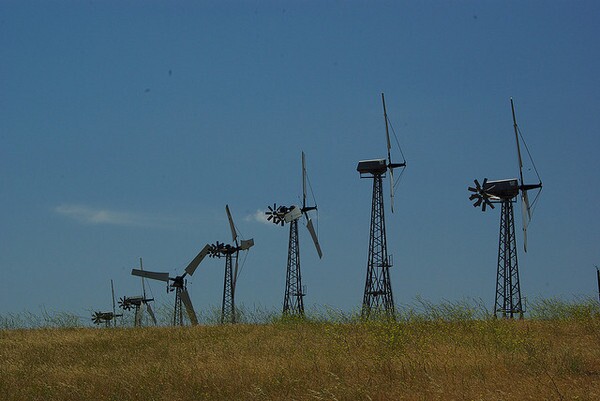Wildlife Advocate Pressure Cuts Altamont Wind Bird Kills In Half

A years-long campaign to reduce bird mortality at the Altamont Pass wind turbine area has cut deaths of eagles and three other bird of prey species by about 50 percent since 2005, according to a study completed in November that's just starting to attract some notice. A combination of junking obsolete turbines and paying closer attention to siting seems to have reduced the number of bird deaths at the site.
The study, conducted by the consulting firm ICF International for the Alameda County Community Development Agency, was delivered to the county in November.
According to a recent blog post on the website of the Golden Gate chapter of the National Audubon Society, deaths of four key raptor species dropped significantly from 2005 to 2010:
The estimated number of Golden Eagles killed by turbines each year fell from 58 to 33, Burrowing Owls from 543 to 233, American Kestrels from 415 to 268, and Red-tailed Hawks from 196 to 85.
Golden Gate Audubon's Mike Lynes offers some caveats about the data:
These figures are rough estimates: It's exceedingly difficult to track exact numbers of bird deaths on the sprawling Altamont Pass. And while the data indicate a decline in risks to birds, we know bird injuries and deaths are likely to always result from wind turbine operations.
Some of the decrease in mortality is being attributed to wind turbine owners scrapping many of the Altamont Pass's older turbines, which are commonly agreed to pose significantly more danger to some species than newer, larger turbines whose longer blades spin at fewer revolutions per minute. The fact that those blades are significantly longer, of course, means that blade tips can still reach speeds of more than 150 miles per hours in a moderate wind. Shifting to larger turbines may well prove merely to change the nature of the threat to birds.
Golden Gate Audubon was one of several Audubon chapters that sued in 2004 over bird mortality in Altamont Pass, and a settlement gave developers until November 2009 to reduce raptor mortality by 50 percent. But even though the chapter is treating the study as mixed good news, it may be too late for the Bay Area's eagle population. Doug Bell, wildlife program manager for the East Bay Regional Park District -- much of whose land is near the turbines -- says the region's eagle population may have collapsed past the point where it can rebound. Bell told the San Francisco Chronicle's David Baker that while upgrading turbines can reduce the risk, it won't ever elminiate it. "It still wouldn't get us out of the woods. You put an object up into an air column -- a tower, turbines, wires -- and things that fly are going to get killed whacking into it."


